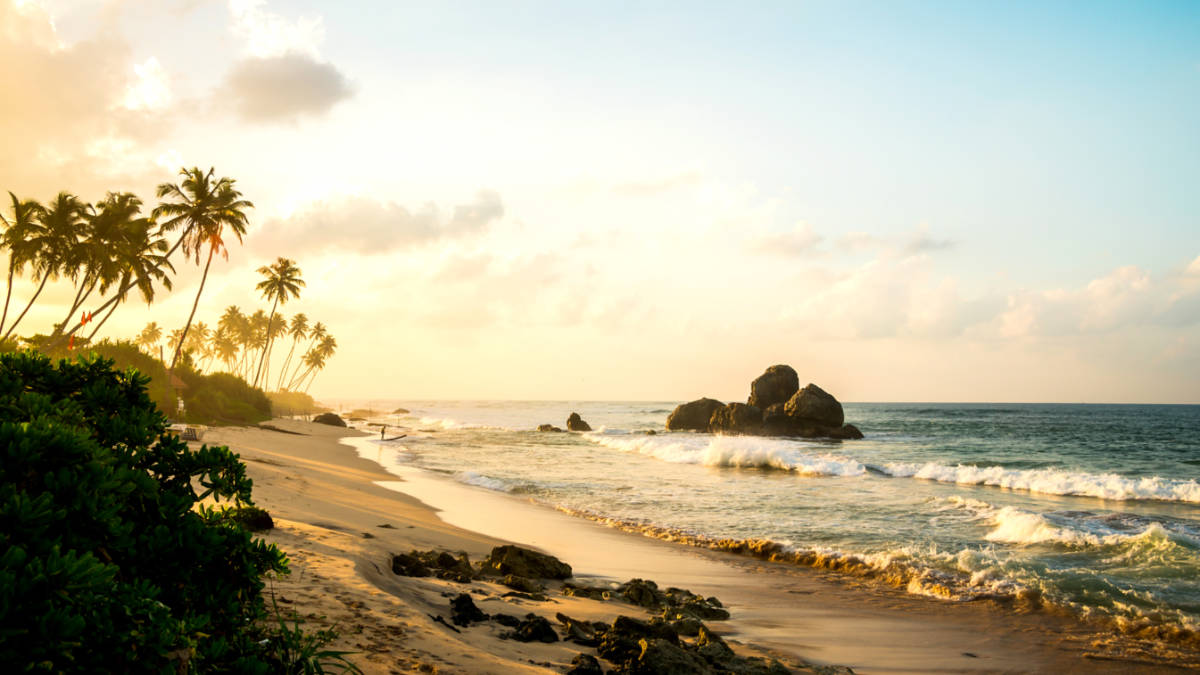On the beach: The dawn of a new mineral sands hotspot in Sri Lanka

Mannar Island could be a landmark project for private mining investment in Sri Lanka. Pic: Getty Images
- Titanium Sands is entering the final stages before production begins at Mannar Island
- A 2023 scoping study for Mannar Island delivered an IRR of 52%, with the mine expected to employ up to 1200 people when fully operational
- Its set to attract more investment into Sri Lanka
Sri Lanka has been a major source of industrial minerals for millennia but one ASX company is on the cusp of becoming the country’s first independent bulk export mineral sands project while actively planning for future expansion.
Titanium Sands (ASX:TSL) is on the march from explorer to operational processor at the Mannar Island project, home to an enormous 318Mt resource at 4.17% total heavy minerals (THM) containing ilmenite, which accounts for the majority of the asset’s mineralisation.
Ilmenite, the main feedstock for producing titanium dioxide (TiO2), is used as a pigment or opacifier in a wide range of daily products such as paints, fabrics, and cosmetics and serves a role in high-performing metal parts like aircraft engines.
It is also growing in prominence for its use within green-energy applications like advanced coatings to improve the energy efficiency of buildings as well as solar panels and wind turbines.
A 2023 scoping study outlined a Stage 1 NPV of $545 million at Mannar Island with a low capex of $122m and payback period of just under two years – making it a globally competitive ilmenite producer of a 4Mtpa operation scenario for 20 years.
With major regulatory hurdles cleared, including the release of key Terms of Reference from Sri Lanka’s Central Environment Authority for an environmental impact assessment (EIA) – TSL’s transition to production is now within reach.

It sets the stage for further final environmental studies to secure an industrial mining licence, and follows the election of the left-wing, mining-friendly National People’s Power coalition government with Anura Kumara Dissanayake sworn in as president last year with promises to transform the island nation into a production-based economy.
Subject to financing, market conditions and other factors, construction at Mannar Island could get underway later this year with additional studies expected to indicate a much longer project life of up to 40 or 50 years.
The company is now working with consultants to target a mid-2025 EIA submission that will pave the way for the bureau to greenlight the all-important industrial mining licence.
A $2b boost to Sri Lanka’s economy
While multiple companies are involved in Sri Lanka’s mineral sands industry, the country’s primary ilmenite producer is the state-owned enterprise, Lanka Sands Corporation, which has been operating from Pulmoddai in the northeast for over 50 years.
If TSL’s plans come to fruition, it could mark the beginning of a promising new jurisdiction, with serious potential to attract more investment into the country and deliver real benefits to the local economy.
The project is poised to produce up to 150,000t of heavy minerals annually, while directly employing up to 1200 people – a boon for the region’s community that will see Sri Lanka’s government revenues jump by about $2b.
The Mannar Island deposit is made up of a >12m thick sequence of <8000yr-old unconsolidated sands that extend in two continuous zones 10-12km long and 1-3km wide. It is joined to the mainland shore by road, rail, power and other associated infrastructure.
Ilmenite market
While various minerals are included in the ‘mineral sand’ suite, the ones primarily sought from mining are ilmenite, leucoxene, rutile and zircon.
Ilmenite is abundant on Sri Lanka’s eastern and southern coastlines and is often referred to as ‘black gold’ given its black colour and high economic value.
The mineral is commonly found in beach sand deposits, formed from the weathering and erosion of rocks over millions of years.
As the rock erodes, the heavier minerals are concentrated in beach and dune environments, where lighter minerals like quartz are washed away by waves and wind.
Ilmenite’s compounding growth in the pigment market is around 4 to 5% per annum and has been in those bounds for a long period of time.
TSL managing director Dr James Searle told Stockhead the reason for that is because ilmenite is used in what can best be termed as ‘quality of life products’ and consequently, is very closely related to the long-term growth in global GDP.
“Countries that have increasing GDP use more and more of the primary products of ilmenite which are pigments used in plastics, paints and surface coatings – it is a steady growth commodity, not volatile like nickel, gold or cobalt,” he said.
“Stage one involves the production of 120,000t of ilmenite per year with minor credits for rutile and zircon as a small subsidiary by-product and we are looking at potentially doubling or tripling those production numbers.”
TSL’s high quality ilmenite product is expected to find a ready market with titanium slag and sulphate route pigment producers in the Middle East, Korea, India, China and elsewhere.
Other ASX mineral sands stocks to watch
Fellow small cap titanium explorer Petratherm (ASX:PRT) is unravelling a large heavy mineral sands discovery at Muckanippie in South Australia’s northern Gawler Craton.
Muckanippie is yet to host a resource estimate and unlike Iluka’s nearby Jacinth Ambrosia mine is not expected to be a major zircon producer, but early drill hits suggest it’s rich in titanium dioxide bearing material that observers knowledgeable on the market say should translate to a premium basket price.
Precision Funds Management executive director Andy Clayton reckons Muckanippie is “really interesting” because you can see from very limited drilling that they’ve got size.
“They have over 6-7km already. So you can see resource potential really in that plus 300 million tonnes (area) so it’s not going to be a resource question,” he said.
READ: Precision Points: Why it’s the right time for a bit of portfolio medicine
Over in Malawi, Sovereign Metals (ASX:SVM) owns the Kasiya rutile-graphite project, known to be he world’s largest natural rutile deposit with a resource of 1.8Bt grading 1% rutile and 1.4% graphite, two-thirds of which is in the higher confidence indicated category that provides enough certainty for mine planning.
This is a significant amount of natural rutile that could be brought into the market at a time when existing supplies are being depleted.
Kasiya would cost US$597m to build but generate US$415m in average annual EBITDA and US$16bn in revenue over its first 25 years of operations, according to a pre-feasibility study released in 2023.
At 222,000tpa it would be the world’s largest single rutile operation and one of the largest ex-China flake graphite producers at 244,000tpa.
Sovereign counts mining giant Rio Tinto (ASX:RIO) as the largest shareholder on its register, making the developer a major M&A target.
At Stockhead, we tell it like it is. While Titanium Sands, Petratherm and Sovereign Metals are Stockhead advertisers, they did not sponsor this article.
Related Topics

SUBSCRIBE
Get the latest breaking news and stocks straight to your inbox.
It's free. Unsubscribe whenever you want.
By proceeding, you confirm you understand that we handle personal information in accordance with our Privacy Policy.








